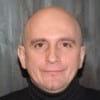Explore all the information on
Porcine Reproductive & Respiratory Syndrome (PRRS)
Porcine reproductive and respiratory syndrome (PRRS) was first reported in the USA in 1987. Since then, outbreaks of PRRS and successful isolation of the virus have been confirmed throughout North America, Asia, South America, Africa, and Europe.
The etiologic agent of porcine reproductive and respiratory syndrome is a virus in the group Arteriviridae. The virus is enveloped and ranges in size from 45 to 80 mm. Inactivation is possible after treatment with ether or chloroform; however, the virus is very stable under freezing conditions, retaining its infectivity for 4 months at -70°C (-94°F). As the temperature rises, infectivity is reduced (15–20 minutes at 56°C [132.8°F]).
After infection of a naive herd, exposure of all members of the breeding population is inconsistent, leading to development of naive, exposed, and persistently infected subpopulations of sows. This situation is exacerbated over time through the addition of improperly acclimated replacement gilts and leads to shedding of the virus from carrier animals to those that have not been previously exposed.
The primary vector for transmission of the virus is the infected pig and contaminated semen. Controlled studies have indicated that infected swine may be long-term carriers, with adults able to shed PRRS virus for up to 86 days after infection, and weaned pigs able to harbor virus for 157 days. Experimentally infected boars can shed virus in the semen up to 93 days after infection.
Paul Yeske (Swine Vet Center) comments on the variants found in different regions, during this Swine It interview with host Laura Greiner....
Comments : 1
Recommendations: 0
Introduction: The PRRS vaccines have been considered as a part of the tools to control PRRSv problems. Several commercial type 2 PRRS vaccines are available in the Thai swine industry. The aim of this study is to compare the efficacy of PRRS vaccines type 2 vaccination in piglets in a commercial farm in Thailand. Materials and Methods: The retrospective study was observed in 1,300 sows farrow – nursery farm with conversional system located in...
Comments : 0
Recommendations: 0
Introduction: Introduction of gilts into a swine farm always conveys the risk of disease introduction into the recipient herd and, consequently, from a regional perspective, disease introduction into clusters of neighboring farms. In several areas in North, Central and South America, the swine industry is organized in projects of PRRS (Porcine Reproductive and Respiratory Syndrome) control by regions. These projects allow for coordinated actions to control PRRS and for sharing...
Comments : 0
Recommendations: 0
Introduction: Porcine reproductive and respiratory syndrome (PRRS), caused by PRRS virus (PRRSV), is a major threat to the swine industry worldwide. The genome of PRRSV is characteristic of its extensive genetic variation, resulting in the complexity of not only genotype but strain diversity. In China, the distribution and ranks of the different PRRSV strains remain unknown in the swine herds although classical, high pathogenic (HP-) and novel variant PRRSVs co-exist. This study...
Comments : 0
Recommendations: 0
Introduction: Porcine reproductive and respiratory syndrome (PRRS), caused by PRRS virus (PRRSV), still engenders immense economic losses to the swine industry worldwide. The co-existence of multi–type stains, rapid evolutionary rate and possible recombination of PRRSV lead to increased genetic diversity. Here we report the important recombination of 3 Chinese PRRSV strains collected during 2013-2015. Materials and Methods: Full-length genome of four...
Comments : 0
Recommendations: 0
Introduction: Genotype 1 porcine reproductive and respiratory syndrome virus (European type PRRSV) has been rampant and resulted in extensive economic loss throughout Korea since the virus was first detected in 2005. Nevertheless, molecular analysis of EU genotype PRRSV has been limited to ORF5 and/or ORF7. Here, we determined the positive rates of EU PRRSV in Korea and molecular analysis of ORF4-6 sequences of Korean genotype 1 PRRSV. Materials and Methods: A...
Comments : 0
Recommendations: 0
Introduction: Porcine reproductive and respiratory syndrome (PRRS) is characterized by reproductive failure of sows and respiratory problems of nursery and growing pigs. Present management strategies mainly focus on the prevention of infection using vaccination but are not sufficient to eradicate the virus and provide complete immunity. Therefore, in searching for agents that may prove clinically effective against PRRSV infection, seventeen Asian medicinal plant extracts were...
Comments : 0
Recommendations: 0
Introduction: PRRS is one of the most significant pig diseases in the modern swine industry. The addition of a killed vaccine (KV) (PROGRESSIS, Merial, France) vaccination at D90 of gestation in farm where sows are regularly vaccinated with a modified live vaccine (MLV) have been shown to contribute to the stabilization the sows, leading to a better control of PRRS virus circulation in the pig flows. This case report describes a long-period monitoring of PRRSV circulation using...
Comments : 0
Recommendations: 0
Introduction: Porcine reproductive and respiratory syndrome virus (PRRSV) is an economically important animal virus that causes reproductive failure and respiratory track illness in pigs. Current inactivated vaccines have low efficacy and/or complicated time-consuming production procedure requiring application of hazardous reactants such as formaldehyde or binary ethylenimine. Here, we studied the possibility of hydrogen peroxide (H 2 O 2 ) as a suitable...
Comments : 0
Recommendations: 0
Introduction: Oral fluid is convenient sample for monitoring of PRRSV in pig herds. However, due to its nature, it is recommended to maintain cold chain during transport and storage. The aim of the study was to evaluate the impact of storage conditions of oral fluid on sensitivity of real time PCR to detect PRRSV. Materials and Methods: Oral fluid was obtained from a PRRSV-positive farm, transported to the laboratory, and stored at -20°C. The sample was...
Comments : 0
Recommendations: 0


Overview of Performance of Listed Vitamin Companies in 2023
Suggested link
Introduction: Porcine reproductive and respiratory syndrome (PRRS) is a devastating viral disease affecting swine industry worldwide. Innate immune response to PRRS virus (PRRSV) infection varies among pig breeds. Elucidating the role of host genetics in the variation of PRRSV vaccine responsiveness may lead to characterize the host immunocompetence and thereby resistance to PRRS. Therefore, the current study aimed to investigate the breed difference in innate immune response to...
Comments : 0
Recommendations: 0
Introduction: PRRS and CSFV vaccine are both widely used in China. Most of time they will be vaccinated on piglets apart 2 weeks. Studies have shown that vaccinating CSFV vaccine 2 days after PRRS vaccination will reduce CSFV immunity response.From our farm routine antibody monitor program, we found CSFV antibody positive rate always low(< 30%), so we designed to investigate if vaccinated piglets CSFV vaccine 2 weeks after PRRS vaccination still influence CSFV antibody...
Comments : 0
Recommendations: 0
Introduction: Approximately 40 % of Danish swine herds are positive for PRRSV. PRRSV is secreted in nasal and oral fluid and can be detected in serum for weeks after infection. To control PRRSV it is critical to monitor the PRRSV status in different production stages. Information on ongoing PRRSV infection is normally obtained by test of serum which is laborious and stressful for the pigs. The aim of the study was to test if test of oral fluids can replace serum for PRRSV...
Comments : 0
Recommendations: 0
Introduction: Airborne transmission of Porcine Reproductive and Respiratory Syndrome Virus (PRRSV) has been known for a long time. Most experiments were performed using type 2 PRRSV and fairly little information is available on the spread of type 1 PRRSV via aerosols. The aim of this study was to compare 3 different air sampling systems for their ability to detect aerosolized type 1 PRRS modified live vaccine virus. Materials and Methods: Three different air...
Comments : 0
Recommendations: 0
Introduction: PrimePac PRRS™ is a newly introduced modified life PRRS Type II vaccine that can be administered either intradermally (ID) with the IDAL device or intramuscularly (IM). The objective of this study was to evaluate duration of immunity of this vaccine via both administration routes in SPF piglets vaccinated at 2 weeks of age and challenged with a virulent PRRSv strain 23 weeks later. Materials and Methods: Two-week old piglets were vaccinated...
Comments : 0
Recommendations: 0
Introduction: Porcine Reproductive and Respiratory Syndrome virus (PRRSv) may cause significant losses in pig herds due to pre-weaning mortality and reduced performance in growing pigs. In Belgium, the virus is widespread and endemic in most herds. An earlier trial showed that infection of PRRSv mainly occurs near the end of nursery (8-12 weeks of age (w)). PRRSv vaccines are effective under experimental conditions, but sometimes fail to cover the field expectations. Sow...
Comments : 0
Recommendations: 0
Introduction: Parvoviruses have been circulating in the global pig population for some time. So far, six porcine parvoviruses have been described in pigs including the classical PPV1 commonly associated with reproductive failure in breeding herds and newly recognized PPV2, PPV3, PPV4, PPV5 and PPV6. An association of porcine circovirus type 2 (PCV2) and PPV1 (also known as the classical PPV) or the PPV2 with porcine circovirus associated disease (PCVAD) has been established. The...
Comments : 0
Recommendations: 0
Introduction: Porcine reproductive and respiratory syndrome virus (PRRSV) is widespread among swine population, causing reproductive disorders in sows and respiratory disease in pigs of all ages. In Greece, PRRSV was first detected in 1993. Today, PRRSV appears in an enzootic form, with elevations and declines of reproductive problems in breeding stock and increases of respiratory problems in growing-finishing pigs, causing economic losses. The aim of this study is to...
Comments : 0
Recommendations: 0
Introduction: In Flanders, the Porcine Reproductive and Respiratory Syndrome virus (PRRSv) and Porcine Circovirus 2 (PCV2) are endemic on most herds and recognised as two major pathogens with a significant economic impact in the domestic pig. In order to monitor the infection status of a herd concerning PRRSv and PCV2 a voluntary program started in February 2015 with financial support of the Belgian Fund for Animal Health (For more details, refer to the companion...
Comments : 0
Recommendations: 0
Introduction: Porcine respiratory and reproductive syndrome virus (PRRSV) is an important porcine pathogen that causing huge economic impact in swine industry worldwide. The genetic characteristics of the PRRSV strains clearly indicate the existence of two major genotypes, the European type (EU genotype, type 1) and the North American type (NA genotype, type 2). However there was no viremia detection result of type 1 and 2 PRRSV by quantitative real-time PCR assays in...
Comments : 0
Recommendations: 0





.jpg&w=3840&q=75)









